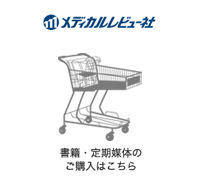スルフォラファンは,試験管内において終末糖化産物(AGE)形成を抑制する
Sulforaphane inhibits formation of advanced glycation end products in vitro
- 1) 久留米大学医学部内科学講座腎臓内科部門
- 2) 久留米大学医学部糖尿病性血管合併症病態・治療学
- 1) Division of Nephrology, Department of Medicine, Kurume University School of Medicine
- 2) Department of Pathophysiology and Therapeutics of Diabetic Vascular Complications, Kurume University School of Medicine
執筆者連絡先
Author Contact
山岸 昌一
〒830-0011 久留米市旭町67
久留米大学医学部糖尿病性血管合併症病態・治療学
shoichi@med.kurume-u.ac.jp
Yamagishi Sho-ichi
Department of Pathophysiology and Therapeutics of Diabetic Vascular Complications,
Kurume University School of Medicine, Kurume 830-0011
shoichi@med.kurume-u.ac.jp
Diabetes Frontier Online 1, e1-001, 2014 http://doi.org/10.15634/J0100_0101_001
- 受付日
- 2014-06-01
- 受理日
- 2014-06-14
- 掲載日
- 2014-06-20
Diabetes Frontier Online 1, e1-001, 2014 http://doi.org/10.15634/J0100_0101_001
- Reception Date
- 2014-06-01
- Accept Date
- 2014-06-14
- Run Date
- 2014-06-20
要約
Abstract
慢性的な高血糖状態では,還元糖による蛋白質や脂質のアミノ基の非酵素的糖化反応が進み,循環血液中や組織で終末糖化産物(AGE)が促進的に形成,蓄積されてくる。近年,AGEの蓄積が,糖尿病の臓器合併症にかかわっていることが明らかにされてきた。本研究では,スルフォラファンの試験管内におけるAGE形成阻害作用について検討した。スルフォラファンはいずれの濃度(0-100μM)においても0~3日目までのインキュベーションでは,AGEに特異的な蛍光波長の発生に影響を及ぼさなかった。しかしながら,5日間のインキュベーションでは,いずれのスルフォラファン濃度においてもAGEに特異的な蛍光強度が低下することが観察された。さらに,ELISA法により,グリセルアルデハイドに由来するAGEを特異的に計測してみると,高濃度(25,100μM)のスルフォラファンにより濃度依存性にAGEの形成が抑えられることが見い出された。スルフォラファンは,AGEの形成を抑えることで,糖尿病の臓器合併症の発症・進展に保護的に働く可能性が考えられる。
Reactive derivatives from non-enzymatic glucose-protein condensation reactions, as well as lipids and nucleic acids exposed to reducing sugars, form a heterogeneous group of irreversible adducts called “AGE (advanced glycation end product)”. The formation and accumulation of AGE have been known to progress at an accelerated rate under diabetic conditions. There is a growing body of evidence that AGE and their receptor (RAGE) interaction elicit oxidative stress generation and evoke inflammatory and thrombogenic reactions, thereby being implicated in diabetic vascular complications. In this study, we examined the effects of sulforaphane on AGE formation in vitro. 0.4-100 μM sulforaphane for 5 days significantly decreased the AGE-evoked fluorescence intensity (Ex=355nm, Em=460nm). Furthermore, enzyme-linked immunosorbent assay revealed that sulforaphane at 25-100 μM dose-dependently reduced AGE formation in vitro. Our present study suggests that sulforaphane might protect against organ damage in diabetes via suppression of AGE formation.
キーワード
- AGE
- RAGE
- スルフォラファン
- 酸化ストレス
- 糖尿病血管障害
keywords
- AGE
- RAGE
- sulforaphane
- oxidative stress
- diabetic vascular complications




